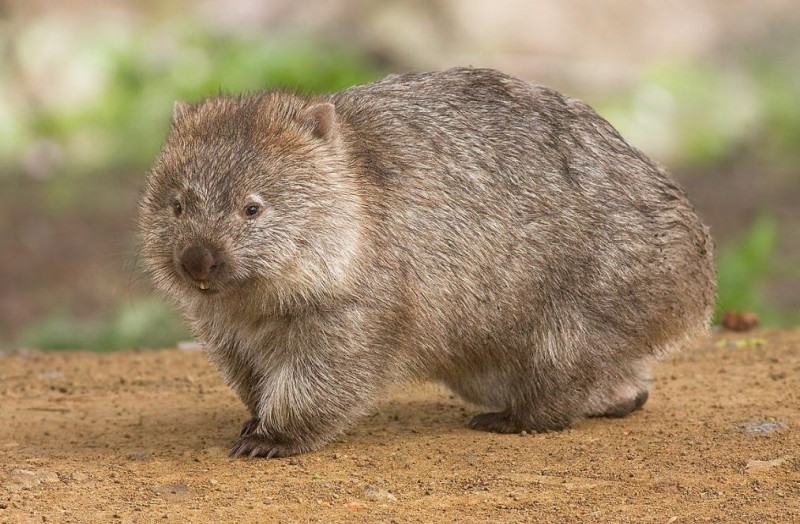
Nature never fails to surprise us with its peculiarities, and one such extraordinary phenomenon lies within the animal kingdom—the cube-shaped feces of wombats. This curious feature has puzzled scientists for decades, leading them to explore the reasons behind this unusual adaptation. In this article, we will delve into the science behind wombats' cube-shaped droppings and understand the significance of this biological oddity.
The Wombat and Its Unique Droppings
Before we unravel the mystery of the peculiar feces, let's take a moment to appreciate the fascinating creature responsible for this extraordinary phenomenon—the wombat. Native to Australia, wombats are marsupials known for their burrowing abilities and stocky, robust build. They play a crucial role in their ecosystem, and their feces have intrigued researchers for their peculiar shape.
Unraveling the Mystery of Cube-Shaped Feces
A Marvel of Engineering
The cube-shaped feces of wombats are no random occurrence; they are a result of remarkable engineering. The intricacies of how wombats produce such distinct-shaped droppings have captivated scientists worldwide.
The Science Behind Cube Formation
Researchers have discovered that the unique shape of wombat feces is a combination of biological and mechanical processes. The cubic form is thought to be achieved through the contraction of the muscles in the intestine, as well as the varying elasticity of the intestinal walls. This combination results in a distinctive cube shape during the final stages of digestion.
The Significance of Cube-Shaped Feces for Wombats
Efficient Territory Marking
One of the primary reasons for the cube-shaped feces is its efficiency in territory marking. Wombats use their droppings strategically to communicate with other wombats, demarcating their territory effectively. The cubic shape prevents the feces from rolling away on steep terrain, making it a reliable marker for long periods.
Adaptations for Steep Terrain
Living in rugged landscapes, wombats needed an adaptation that would prevent their droppings from rolling away down slopes. The cube-shaped feces provide stability, allowing the markings to remain in place even on steep inclines.
Wombat Feces as Nature's Puzzle
While scientists have made significant progress in understanding the phenomenon, cube-shaped feces continue to intrigue researchers, raising questions about the evolutionary advantages it provides to wombats.
How Researchers Studied Wombat Feces
Field Observations
Studying wombats in their natural habitat has been essential to understanding their behavior and the role of their cube-shaped droppings in the ecosystem. Researchers have spent hours observing and recording wombat behaviors to gain insights into this extraordinary feature.
Imaging Techniques
Advancements in imaging technology have enabled scientists to analyze the internal mechanisms involved in the formation of cube-shaped feces. Non-invasive imaging techniques have shed light on the intricate process occurring within the wombat's digestive system.
Cube-Shaped Feces Beyond Wombats
The world of biology is filled with other fascinating examples of animal adaptations that serve unique purposes. Let's explore some other instances where animals have evolved extraordinary feces shapes.
Understanding Other Animal Adaptations
The Case of the Penguin's Slanted Poop
Penguins have adapted to expel their feces at an angle to avoid soiling their feathers while defecating within large colonies. This adaptation helps in maintaining hygiene and preventing the spread of diseases among the tightly packed penguin communities.
Square-Shaped Fish Eggs
Certain species of fish have evolved to produce square-shaped eggs, which provide them with a more stable and compact arrangement. This unique shape allows them to optimize space and increase their chances of survival in their aquatic environment.
The Implications of Cube-Shaped Feces Research
The study of cube-shaped feces extends beyond its peculiar nature; it has practical applications in various fields, such as material science and engineering. The insights gained from understanding the mechanics of cube formation could inspire new designs and innovations.
The Fascinating World of Animal Biology
Wombat feces are just one of the countless marvels found in the animal kingdom. The more we explore and study the natural world, the more we realize the sheer complexity and ingenuity of the creatures we share our planet with.
The cube-shaped feces of wombats may have started as a biological mystery, but through dedicated research and observations, we are gradually uncovering the secrets behind this fascinating phenomenon. It serves as a testament to the incredible diversity and adaptive capabilities of nature's creations.
Tell an Old Joke Day: Celebrating Timeless Humor of Yesteryears
Josephine Chaplin, Actor and Daughter of Charlie Chaplin no more!
Govt Action Looms for Twitter after Viral Video of Manipur Women Paraded Naked